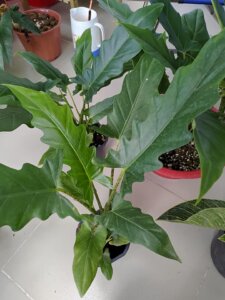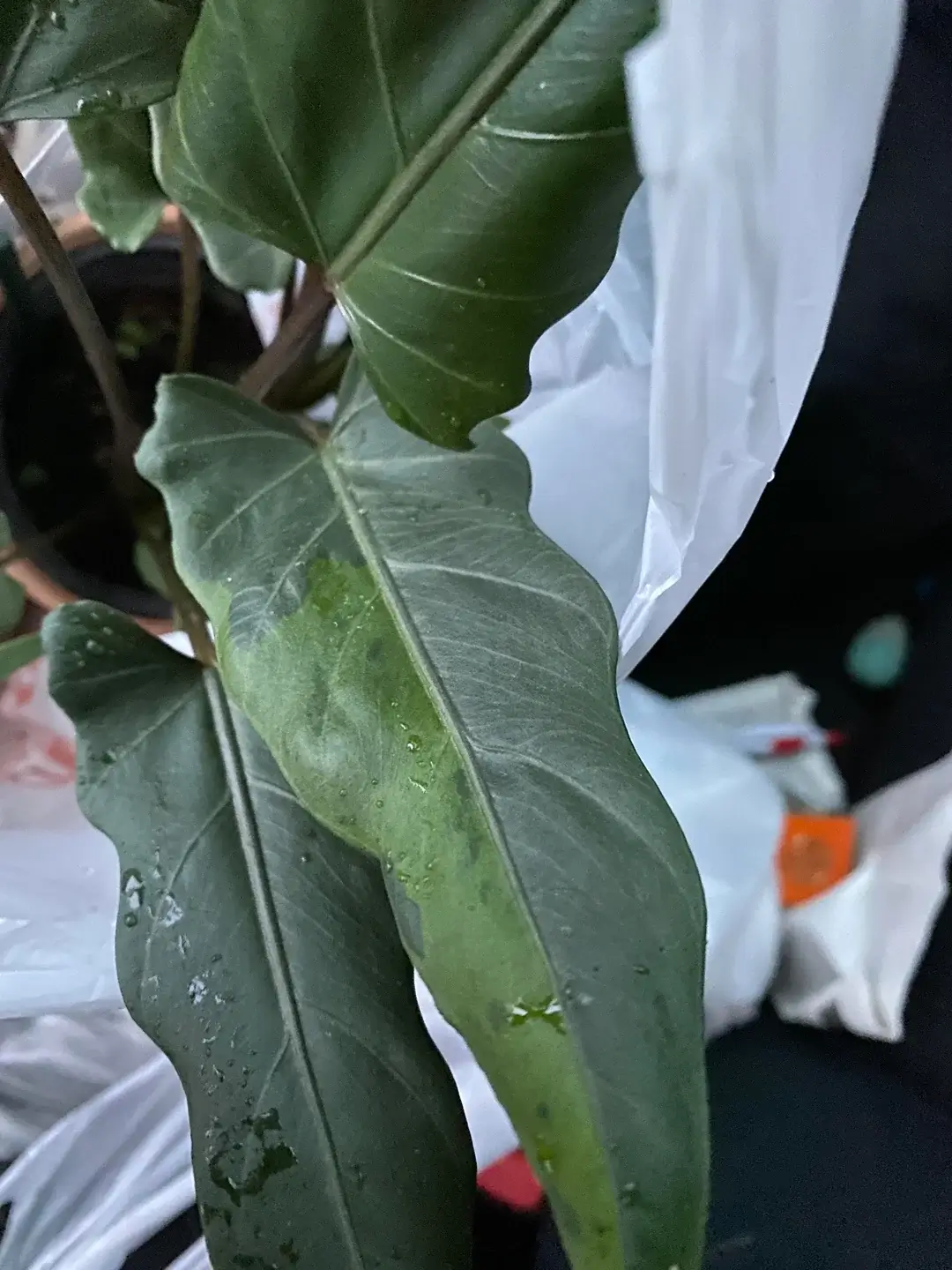Basic Information
Meet the Alocasia Lauterbachiana, also known as the Purple Sword. This striking plant has spear-shaped leaves and unique coloration and is perfect for both indoor and outdoor gardens. Our guide will help you care for your Alocasia Lauterbachiana so it thrives in your home or office.



Light
Alocasia Lauterbachiana flourishes in bright, indirect sunlight. Direct exposure can scorch its leaves, while insufficient light may hinder growth. The ideal spot is near an east or west-facing window, with a sheer curtain to filter intense rays. Rotating the plant occasionally ensures even growth, preventing it from leaning towards the light source.
Water
Watering this Alocasia involves a delicate balance – the soil should be moist but never soggy. Let the top third of the soil dry out between waterings, and be more conservative with water in winter. Overwatering can lead to root rot, a common issue with this species. Using water at room temperature helps prevent root shock.
Soil
The Alocasia Lauterbachiana prefers a well-draining, airy soil mix. A blend suitable for tropical plants or succulents, incorporating elements like perlite, peat moss, and coarse sand, works well. This plant thrives in slightly acidic soil, with a pH between 5.5 and 6.5, ensuring optimal nutrient uptake.
Temperature
Warm, stable temperatures between 65°F and 75°F suit this Alocasia best. It’s sensitive to sudden temperature changes and does not tolerate cold well. If outdoor temperatures dip below 60°F, it’s time to move your Alocasia indoors. Steady warmth is key to maintaining its health and vibrancy.
Humidity
Alocasia Lauterbachiana thrives in high humidity, ideally around 70%. In dry indoor environments, use a humidifier, mist the plant regularly, or place it on a pebble tray with water. Grouping it with other humidity-loving plants can also create a more humid microclimate.
Fertilizer
During its growing season (spring and summer), feed the Alocasia Lauterbachiana with a diluted, balanced liquid fertilizer every two weeks. In winter, reduce this to once every six weeks. Over-fertilizing can harm the plant, so it’s better to underfeed than overfeed. Ensure the soil is moist before applying fertilizer to prevent root burn.
Growth Rate
In ideal conditions, the Alocasia Lauterbachiana is a fast grower, reaching heights of about 3 feet indoors. Its growth rate is influenced by factors like light, temperature, and watering. Regular pruning and maintenance can stimulate healthier, more robust growth. Outdoors, it can grow taller, up to 4 feet.
Pet Safety
Alocasia Lauterbachiana is toxic to pets and humans. Its leaves contain oxalate crystals that can cause irritation, swelling, and breathing problems if ingested. Keep this plant out of reach of children and pets.
Grow in Semi-Hydro
- Monsteras, known for their robust growth and iconic split leaves, flourish in semi-hydroponics systems like LECA/Pon, thanks to their adaptive root systems and love for moisture.
- Transitioning Monstera to semi-hydroponics is effective with a Nutrient Stagnant Wicking (NSW) setup, ensuring a stable and efficient growth environment.
- In LECA/Pon, Monstera roots quickly adjust, overcoming any initial challenges with root adaptation in the NSW system.
- A nutrient mix with a concentration of about 800-1000ppm is ideal for fertilizing Monsteras in semi-hydro setups.
- Monsteras are adaptable to various temperature and humidity conditions, making them suitable for growth in diverse indoor environments.
- Ongoing care includes regular monitoring of the water level in the reservoir and periodic flushing of the system to promote healthy and continuous growth.
Tips
- Ensure the plant receives bright, indirect sunlight; avoid direct exposure.
- Water when the topsoil feels dry; avoid overwatering.
- Use a well-draining, slightly acidic soil mix.
- Maintain a warm, stable environment and high humidity.
- Fertilize moderately; over-fertilizing can be harmful.
- Prune regularly to stimulate growth and remove dead or yellowing leaves.
- Rotate the plant periodically for even growth.
- Monitor for pests and treat promptly to prevent infestations.
Care for your Alocasia Lauterbachiana to bring a touch of the tropics to your home. Follow care tips to ensure it remains a stunning addition to your indoor garden.
Happy planting! 🌱


